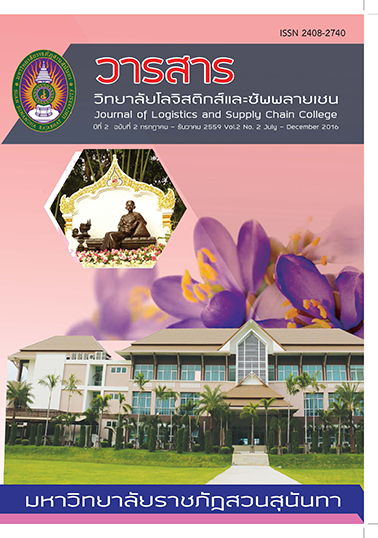03 The Study Guidelines in Warehouse Management : A Case Study of Drinking water factory storage. KCR Co., Ltd.
Keywords:
Warehouse; Warehouse management; Drinking water factoryAbstract
This research aimed at 1) the examination of K.C.R. drinking water plant’s warehousemanagement
problems, and 2) the exploration of K. C. R. drinking water plant’s warehousemanagement
guidance. A total number of 12 key informants were categorized into 2 groups:
operational staffs and entrepreneurs. The research tools for identifying the warehouse
management solutions included the structured in-depth interview form and brainstorming.
The research results revealed that 1) the problems related to the receiving procedure
were found in time of the prevalence of a large number of incoming and outgoing goods
because the loading and unloading place was in the same location. The storage problems
were derived from the inefficient area allocation as a result of no determination of a specific
storage area. Besides, the goods distribution problem involved the customers’ failure to receive
their actually-ordered quantity. Meanwhile, there was also the inventory discrepancy between
the actual number of goods and the quantity as shown in the records. 2) The solutions may
include the following actions: arrangement of meetings, preparation of regulations on operation
and storage procedure and use of warehouse management software. Besides, it was required
for storage staffs to comply with goods removal and storage manual, while the trainings on
inventory management beginning from the work process of goods and supplies staffs and
on Vendor Managed Inventory (VMI) should be arranged too. A storage system should be
available with a fixed positioning along with the implementation of first in first out strategy in
picking operations. Thus, prior to the picking of goods, the picking staffs should inspect them
and make a banner clearly identifying their position. With regard to the inventory inspection,
the inventory observation should be conducted twice a year for the purpose of inventory
adjustment in line with the warehouse system records. The inspected areas were then marked.



